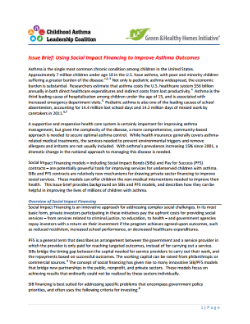ACA and Changing Policy: Continuous Coverage
About the Series: In February 2010, the George Washington University School of Public Health and Health Services, Department of Health Policy released Changing pO2licy: The Elements for Improving Childhood Asthma Outcomes. The report provided a comprehensive look at childhood asthma prevalence, risk factors and disparities; described best practices for clinical care and disease management; and, outlined evidence-based policy recommendations to improve the prevention, diagnosis, treatment, and long-term management of childhood asthma.
The report identified five essential elements for improving asthma outcomes in children:
- Stable and continuous health insurance
- High-quality clinical care, case management and asthma education available for all children
- The ability to continuously exchange information and monitor progress, using health information technology
- Reducing asthma triggers in homes and communities
- Learning what works and increasing knowledge
Following the release of these recommendations, Congress passed the Affordable Care Act (ACA), emphasizing expanding access to private health insurance and Medicaid and reforming the healthcare delivery system to improve quality. The ACA includes provisions to eliminate health care disparities, strengthen public health programs and access to preventive services, invest in expanding and improving the health care workforce, and encourage care coordination and disease management.
Many ACA provisions correspond to recommendations in the Changing pO2licy report and have the potential to profoundly impact the prevention and treatment of childhood asthma.
This paper focuses on one of the five essential elements for improving asthma outcomes in children: stable and continuous health insurance. The accompanying chart describes ACA provisions and implementation activities that could be activated to help millions of children most at risk for asthma.
Click here to view the chart.











